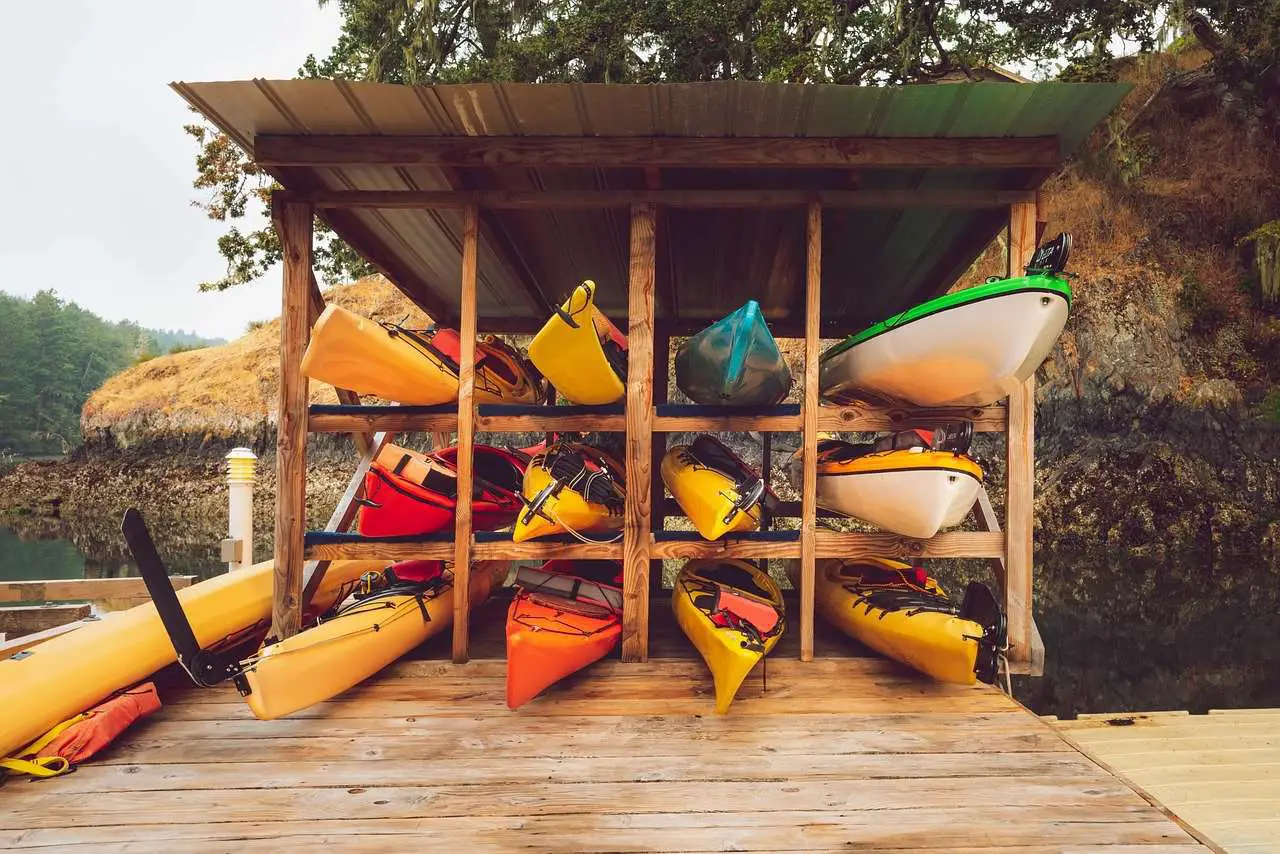If you have recently become a fan of kayaking, you might be considering purchasing your own kayak. Perhaps that has left you wondering – hard-shell or inflatable? What are the advantages of inflatables, and what payoffs do these come with?
Inflatable kayaks are superior in terms of their weight, storage requirements, and portability. They can be as durable and stable as traditional hard shells. However, you will have to spend valuable time inflating them on every use, and many people find them trickier to control.
Inflatable Kayak Vs Hard-Shell
What Are Inflatable Kayaks VS Hard-Shell Kayaks?
Inflatables, as the name suggests, are filled with air, which means that they are very light and easy to store. They have been increasing in popularity for years, and technological advances mean that they perform comparably with hard-shell kayaks in many cases.
Hard shells can be made of a range of materials, including wood, Kevlar, polyethylene, fiberglass, carbon fiber, etc. They have a rigid structure and do not pack down, but many have better durability and control than their inflatable counterparts.
If you’re trying to decide whether to buy a blow-up kayak, here are some of the advantages and disadvantages to help you with your decision. We’ll start with the pros.
Pros
Durability
You might expect a rigid kayak to be more durable than a soft-shell, but actually, inflatables are very tough. They have been specifically designed to withstand the knocks and bumps associated with kayaking and they are able to bounce off when they hit something.
Of course, inflatables do have more of a risk of being punctured or torn. However, a high-quality one should last extremely well.
Drop-stitch inflatables can be inflated to high pressures, meaning that they are very comparable to a hard-shell. While they do tend to be expensive, if you’re looking for something that will stand up to knocks and bumps, these are perfect.
Price
As you might guess, blow-up kayaks are often cheaper than rigid ones. It should be noted, however, that this won’t always be the case. Some inflatables are so well-built that they cost a lot of money.
In terms of quality, if you measure a like-for-like hard-shell against an inflatable, you will probably find that the inflatable comes out cheaper. This may not be the case absolutely all of the time, but it usually is. This should help guide your decision on what to buy.
Portability
Obviously, a huge advantage of a blow-up kayak is that it is very light and very portable. While deflated, it takes up very little space in a car, so you can leave room for other equipment. This is ideal if you want to go kayaking while on a camping holiday, etc.
Even if you have boats for the whole family, they should be easy to fit in the car. They won’t take up valuable space that could be used for other things. They don’t need a dedicated roof-rack.
They are extremely light, too, meaning that you will use less fuel while transporting them. They are also easy to carry down to the water, and back up to the car after a long and tiring session. This is a big plus for many people, especially those kayaking with children.
Blow-up kayaks usually weigh around 25-30 pounds, compared with a hard-shell’s average 40 pounds.
Storage
Again, soft-shells come into their own if you have a small amount of storage space at home. If you love kayaking but rarely get to go, it may seem difficult to justify the space that a rigid version will take in your home. Meanwhile, an inflatable can be packed down to almost nothing and stored in a cupboard.
Stability
If you think that a hard-shell is bound to be more stable than an inflatable, you might want to think again. Soft-shells often have wider bases than hard-shells, and this can actually make them more stable in the water.
This is a big plus for beginner kayakers or kids, who might struggle to keep the boat level in the water. They are also good for experienced kayakers.
Capacity
You might be surprised to learn that soft-shells are often superior in terms of their weight-bearing. Many inflatable kayaks will hold a bit more weight than the comparable rigid boat. This might be important to you if you’re transporting gear in your boat.
Easy Repairs
If you carry a puncture repair kit with you, it’s not a problem to patch up soft-shell kayaks if they do suffer from damage. A rigid kayak, by contrast, is going to prove a little trickier to repair.
Cons
Maneuvrability
Rigid kayaks tend to be better in terms of their maneuverability than inflatables. They sit lower in the water, giving the kayaker more control.
Because soft-shells are light, they tend to be more easily pushed off course, and do not track as well in the water. They often feel sluggish, especially if you have just transitioned from a hard-shell.
Time To Inflate
You will need to build time into your kayaking trip for inflating the boat. You’ll also want to carry a pump, as inflating them by hand is slow and hard-work. On average, you’ll need about ten minutes per boat with a pump.
You also need to pay attention to the rigidity that your kayak can take if you have an inflatable. You want it to be as rigid as possible for best performance. That means you need to know what the PSI (pounds per square inch) is. This can be a bit of a nuisance.
Drying Time
You cannot store an inflatable while it is still wet. You’ll have to thoroughly dry it once you leave the water. Putting it away long-term while there is still moisture on or in it will lead to mold and could damage the material.
Rigid kayaks do also need attention when you get out of the water, but they can be rinsed and rubbed down with a towel. Other maintenance such as waxing can then be dealt with when it suits you, rather than immediately.
Lower Water Ability
If you’re planning to paddle in calm waters, blow-up kayaks will be fine. Many will even handle some rough water, although you’ll have to be careful of jagged rocks which could puncture the boat.
However, few inflatables are capable of taking on white water rapids. If you want to tackle very challenging waters, you will probably want a hard-shell. You’ll also enjoy the better steering and improved durability as extra benefits.
Puncture Risk
Although they are durable, you’re more likely to puncture a blow-up kayak than a rigid one. This is especially true if you’re in an area with sharp rocks or even broken glass. You need to handle them with slightly more care to avoid this.
The flip side of that is that they are easier to repair than a hard-shell. A good puncture repair kit will cover holes and make the kayak functional again.
Summary
There’s no simple answer to which kind of kayak is better. Inflatables can be suitable for beginners through to experts. They offer advantages in terms of their price, their portability and storage, and their stability.
As technology continues to advance and inflatables get better and better, they will likely outstrip hard-shell kayaks even for white water. However, at the moment, hard-shells still hold the edge in difficult conditions and remain easier to control.

